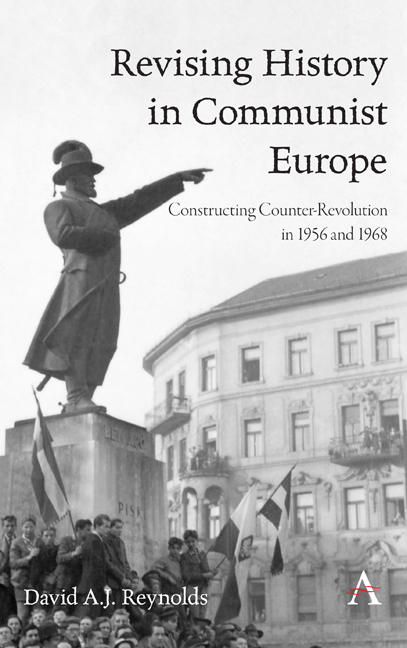Book contents
- Frontmatter
- Dedication
- Epigraph
- Contents
- Acknowledgements
- Introduction
- 1 The Export and Imposition of Stalinism
- 2 Hungarian De-Stalinization and Revising Recent History
- 3 A Revolution, a Counter-Revolution, or a National Uprising?
- 4 Stalinist Purges and De-Stalinization in Czechoslovakia
- 5 The Meaning of 1956 in 1968: March to June
- 6 June: Turning Point and the Hardening of Positions
- 7 July and August: Constructing Counter-Revolution
- 8 The Intentions of Intervention and the Shadow of 1956: Delusion and Failure
- Conclusion
- Epilogue
- Appendix
- Bibliography
- Index
8 - The Intentions of Intervention and the Shadow of 1956: Delusion and Failure
Published online by Cambridge University Press: 16 February 2020
- Frontmatter
- Dedication
- Epigraph
- Contents
- Acknowledgements
- Introduction
- 1 The Export and Imposition of Stalinism
- 2 Hungarian De-Stalinization and Revising Recent History
- 3 A Revolution, a Counter-Revolution, or a National Uprising?
- 4 Stalinist Purges and De-Stalinization in Czechoslovakia
- 5 The Meaning of 1956 in 1968: March to June
- 6 June: Turning Point and the Hardening of Positions
- 7 July and August: Constructing Counter-Revolution
- 8 The Intentions of Intervention and the Shadow of 1956: Delusion and Failure
- Conclusion
- Epilogue
- Appendix
- Bibliography
- Index
Summary
The Soviet-led invasion of Czechoslovakia, two and a half weeks after Bratislava, was the ultimate manifestation of the Soviets’ definition of the Prague Spring: not merely the brute fact of the invasion, but the intentions and assumptions with which it was carried out. This was the moment where all the interpretations, ideological concepts, claims, and historical analogies with which the Soviet leadership, and their allies, had built a view of the Prague Spring finally had to face the jury of reality. As Dubček would tell his captors in Moscow a few days after the invasion, ‘If the appraisal of the situation on your part is somehow unreal, then the methods and solutions to the problem will be incorrect and the results will not be those you believe you are achieving.’
It is common for historical discussion of the Soviet invasion of Czechoslovakia to focus on what the Czechoslovak leadership failed to see or anticipate, but, in fact, what the first days of the invasion and occupation demonstrate most unambiguously is the disconnect between the intentions of the intervention and the reality of the situation in Czechoslovakia. We all know now that, eventually, normalization was set in motion and Czechoslovak reform was decisively suppressed for two decades. But, in the short term, the invasion – judged by the intentions and ideas with which it was carried out – was a failure.
The moment of the invasion was likewise when the analogies and comparisons with Hungary's 1956 were, in some ways, at their least theoretical and their most unpredictable. As airports and city centres were seized across the country by Soviet troops – supported by forces from the GDR, Poland, Hungary, and Bulgaria – new parallels with the end of the Hungarian uprising would inevitably surface. Yet in the early days when the shape of the invasion and occupation of Czechoslovakia was still forming and shifting, such parallels were very different to those that had preceded the invasion. In this moment, the Soviets found themselves once more the victims of their own arbitrarily established constructions of past and present.
- Type
- Chapter
- Information
- Revising History in Communist EuropeConstructing Counter-Revolution in 1956 and 1968, pp. 181 - 198Publisher: Anthem PressPrint publication year: 2020



